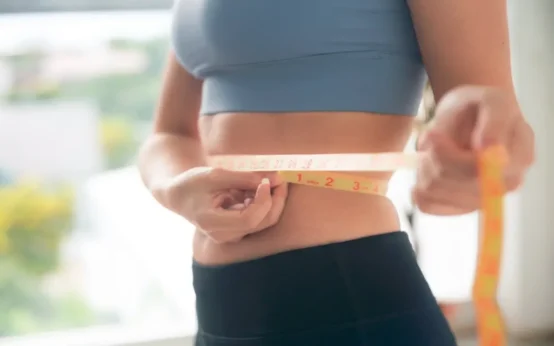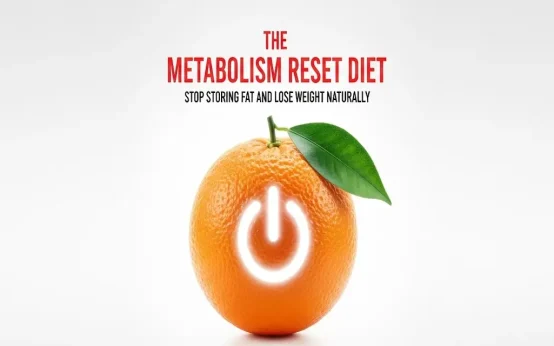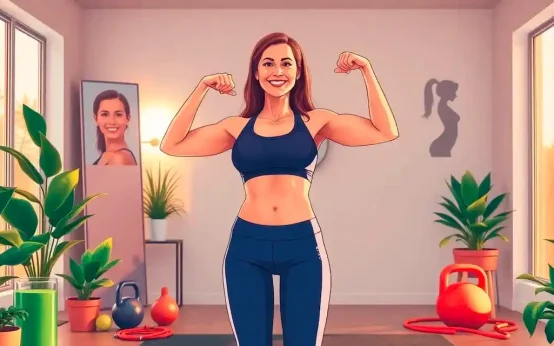One of the most common fitness goals is to lose lower belly fat, but it can be one of the hardest areas to work on. Many people have trouble flattening their lower abdomen, even when they eat right and work out regularly. Even though there isn’t a magic bullet to get rid of fat in just one place, learning about the science behind reducing belly fat and using the right methods can help you see results that last.
Understanding Lower Belly Fat
Lower belly fat is notoriously difficult to lose. It often stays put even as other parts of the body lose weight. Most of the time, this fat is a mix of subcutaneous fat, which is just under the skin, and visceral fat, which is more serious and surrounds organs.
The lower belly can gain fat for a number of reasons, including a bad diet, changes in hormones, and not moving around much. Compared to fat on the thighs or arms, fat around the middle is more metabolically active. This makes it harder to lose and also makes health problems worse.
Key Factors That Contribute To Lower Belly Fat
Having lower belly fat is caused by a number of things, and knowing what those things are is important for dealing with the problem effectively.
- Poor Food and Nutritional Choices: Eating a lot of processed foods, sugary snacks, and refined carbs can create you gain weight and store fat, especially around your middle. If you eat too many of these foods, your blood sugar and insulin levels get out of whack, which makes you store fat.
- Lack of Physical Activity: Doing nothing for long periods, like sitting at a desk or on the couch, can make belly fat grow. If you don’t work out regularly, your body will store extra energy as fat, which usually gathers around your stomach.
- Stress: Long-term stress raises cortisol levels, which is a hormone that can make belly fat build-up. People often call this a “stress belly” because when you’re under a lot of stress, your body stores more fat in your stomach.
- Genetics and Hormonal Imbalances: Hormones like testosterone, estrogen, and insulin play a big role in how fat is distributed. Having low estrogen levels during menopause can make you store more fat around your middle. The way and where the body stores fat are also affected by genes. Some people are more likely to have belly fat.
Effective Exercise Strategies To Target Lower Belly Fat
You can’t just lose fat in one place, but some types of exercise can help you burn fat all over your body, including fat around your middle. To lose the most fat, you need to do a combine of cardio, strength training, and core exercises.
- Cardiovascular Exercise: Running, cycling, swimming, and brisk walking are all examples of cardio exercises that get your heart rate up, burn calories, and help you lose fat overall. Studies have shown that aerobic exercises are the best way to get rid of belly fat. Aim for 150 minutes of aerobic activity at a moderate level each week.
- Strength training: Doing resistance exercises or lifting weights to build muscle helps speed up your metabolism, which means your body burns more calories even when it’s not working out. Squats, lunges, and deadlifts are examples of compound exercises that work the core and target the abdominal muscles, which helps you lose belly fat.
- Core exercises: Planks, leg raises, and mountain climbers are several examples of core exercises that can assist tone and strengthening the muscles under the fat. This will make your body look more defined as the fat is burned off. Adding these exercises to your daily routine will help shape and firm your core over time.
- High-Intensity Interval Training (HIIT): HIIT changes between short bursts of intense activity and rest periods. This makes you burn more calories and lose fat faster. Studies show that HIIT is better than steady-state cardio for losing belly fat because it makes you burn more calories after you work out.
Nutritional Guidelines For Losing Lower Belly Fat
If you want to lose lower belly fat, what you eat is very important. Your goal is to lose fat, so you need to keep burning more calories than you eat. But it’s also important to pay attention to how good your food is.
- Whole foods: Pay attention to a healthy diet full of vegetables, fruits, lean proteins, whole grains, and healthy fats. These foods are high in nutrients and low in empty calories, which can help you feel full and lose fat.
- Reduce Processed Foods and Refined Sugars: Processed foods and sugary snacks raise insulin levels, promote fat storage, and contribute to overeating. Limiting your intake of sugary drinks, pastries, and white bread can help you lose weight and keep you from gaining fat.
- Protein and Fiber: Eat foods that are high in protein, like chicken, fish, tofu, and legumes. Protein helps build muscle and makes you feel full for longer. Fiber-rich foods, like fruits, vegetables, oats, and beans, also help your body digest food and keep you full, which means you eat fewer calories overall.
- Healthy Fats: Don’t be afraid of fats; just pick the right ones. Avocados, nuts, seeds, and olive oil all contain healthy fats that help your body burn fat and keep you full, so you don’t eat too much.
- Hydration: To lose fat, you must drink enough water. Staying hydrated helps the body flush out toxins, keeps the metabolism going, and controls hunger. People sometimes mistake thirst for hunger, which makes them eat snacks they don’t need.
Conclusion
Getting rid of lower belly fat requires a complete plan that includes healthy eating, exercise that works, and a long-term dedication to health. Even though it might take a while to see results, if you keep at it, your belly will get flatter and healthier in the end. Focusing on a healthy, long-term plan will help you lose lower belly fat and improve your health and well-being as a whole.




 How to Start a Weight Loss Program
How to Start a Weight Loss Program  What Vitamin Deficiency Makes It Hard to Lose Weight?
What Vitamin Deficiency Makes It Hard to Lose Weight?  Improve Fat Burning With a Metabolism Reset Diet
Improve Fat Burning With a Metabolism Reset Diet  How to Avoid Loose Skin When Losing Weight
How to Avoid Loose Skin When Losing Weight  Good Eating Habits for Weight Loss
Good Eating Habits for Weight Loss  A Guide to Weight Loss for Busy People in Today’s Society
A Guide to Weight Loss for Busy People in Today’s Society